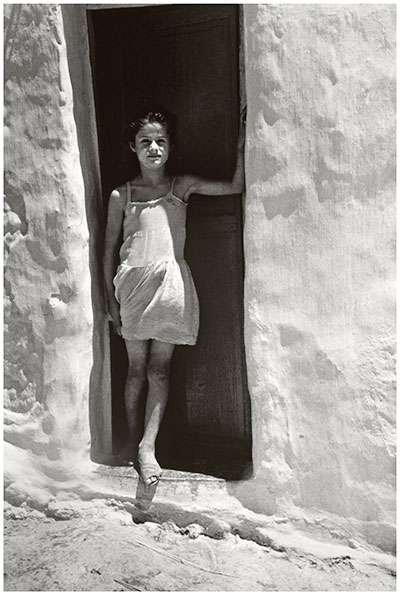A leading figure in photographic modernism and the professionalizing of this medium in Spain, Carlos Pérez Siquier enjoys a prominent place on the Spanish photographic scene. Perez Siquier, who in 2003 received the National Photography Prize from the Spanish Ministry of Culture, is celebrated for his neorealist work and later as a pioneer of color photography. Now, Fundación MAPFRE brings recognition to one of Spain’s photographic masters, with a retrospective exhibition of his most important works.

Born in Almería in 1930, Siquier was exposed to photography from a young age. His father, who was fond of the hobby, had a small photography workshop in the family home. Carlos, influenced by his father’s interest, went on to study Photography at the Almería School of Art. Following this, in 1950 he became one of the co-founders of AFAL (Almería Photo Association) and of the Association’s magazine.
The MAPFRE exhibition begins on the ground floor with a presentation of Siquier’s initial photographic work series focused on capturing the realities of his hometown Almería. Beginning in 1957 in black and white and later moving to colour, the photos capture the neglected neighbourhood of La Chanca, located on the outskirts of the city. In this deprived area, the pictures can be considered images of critical reportage and illustrate the observations of Juan Goytisolo in La Chanca (1962), that in this neighbourhood “they live the enslaved life of the man under the yoke of barbarous colonial exploitation”.

One of his most iconic photographs is featured in this series, which is that of “La Niña Blanca” (The White Girl). A young, local girl stands in the doorway of her small cave-like home barefoot, staring into the lens of the camera. When asked how he came across this scene, he says “I went up, as I did every weekend, to photograph the daily lives of the people who lived there. When I passed in front of the girl, she stood and posed for me. It was as if it touched my heart. And I was very quick. I shot only one photo”.
Later, in 1963, Siquier began working with the Spanish Ministry of Information and Tourism. His photographs of Almería’s coastal hotspots became the background to the tourism posters advertising Spain’s coastline as a holiday destination to the many Northern Europeans looking for sun, sea and sand. These posters can be seen on the top floor of the exhibition along with video reportage.
The wave of mass-tourism to the region’s beaches in the 1970s paved the way for Siquier’s next iconic photography series titled “La Playa” (The Beach). The photos, taken between 1972 and 1980, are also on show in the exhibition. Drawing similarities between British photographer Martin Parr’s work in “The Last Resort”, a series capturing holidaymakers on the beaches of New Brighton, England, the photographs show overweight, sunburnt tourists lying on the white beaches of the Parque Natural de Cabo de Gata-Níjar and Poniente. The images reflect the changes happening during these years in Almeria due to the opening of the local airport and the arrival of the first charter flights for European tourists. These photos are of particular interest from a social standpoint as they illustrate a stark contrast with the almost emaciated and disheveled characters seen in his earlier “La Chanca” series. Siquier’s “La Playa” series presents his movement to the pictorial avant-garde with a clear demonstration of his use of pop art techniques, which are tinged with an ironic approach to the consumer society of the time.
The MAPFRE exhibition offers an interesting narrative to the growth and development of the city of Almeria and its surroundings. Clear parallels can be drawn between the past influx of tourism and the present issues facing Barcelona, with rising tourism levels and the subsequent struggles for locals living in the city. The exhibition is a must-see for anyone interested in this topic that is as relevant now as it was in the 1970s.
By Charlotte Lydia Stace



Enjoyed coming across this as last week I saw the new permanent exhibition of Siguirs work at Olula Del Rio in Almeria Province . I was intrigued by the hand gesture the woman breastfeeding is making at the photographer (thumb over the first finger) and although doing a few searches haven’t been able to come up with an explanation . Do you happen to know ? thanks Steve